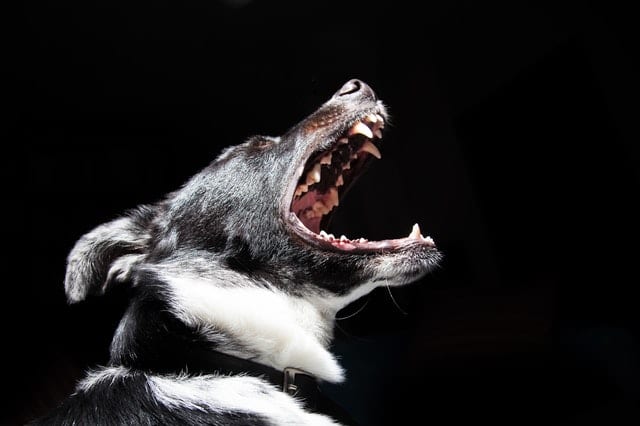Weeknight and 24 hr weekend emergency service
Dog Attacks
WHAT YOU NEED TO KNOW AND TIPS TO PREVENT THEM…
It is usually a highly emotive event. The owner has just witnessed a snarling dog fight, their dog is in pain and they may have even been injured themselves trying to separate the dogs. There is blood, obvious wounds, shock. These situations are upsetting and very stressful for both the owner and their dog. And the damage can be greater than it outwardly appears, both physically and psychologically.
When dogs fight the damage is both penetrating (tooth puncture wounds and skin tearing) and crushing (bruising) by the power of the bite hold. It is the crushing injuries which are not visible that are the most serious. There can be nerve or muscle tearing and penetration of the abdominal or chest cavity.
At the lower end of the scale you might see bruising and bleeding under the skin. If the bruising is severe enough to disrupt blood flow to the tissues and create an environment without blood/oxygen perfusion (anaerobic), then you have the perfect storm for septic shock to develop. The inflammatory cascade from the damaged tissues (triggered by the release of mediators from damaged cells) occurs over several hours and if left untreated, the circulating mediators can cause irreversible changes to the major organs (kidneys, lungs, liver) and eventually death. Most victims of dog attacks are also in a state of shock from their injuries and this further reduces perfusion of the tissues with oxygen.
Think of a dog bite as an iceberg. The little hole you see on the surface is just the tip of the iceberg and the damage underneath the skin is where the bulk of the damage lies.
So what treatment is needed?
Why don’t you just get given antibiotics and pain relief for your dog and go on your way?
Well sometimes this can be appropriate treatment. It all depends on where the bite is, how prolonged the attack was, and how deep the wounds are. It is always recommended that even superficial wounds are clipped and flushed with sterile saline as this will lower the bacterial load in the wound, remove contaminants and allow for better monitoring of the wound.

The vet will use their clinical judgement based on the severity of the wounds and how ‘shocky’ your dog is to advise you on treatment. Hospitalisation, blood tests, intravenous fluid therapy to support blood flow and oxygenation of tissues, intravenous antibiotics and good pain relief using opioids (with potentially a constant rate infusion of pain relief ) could be necessary. Remember if pain is left untreated it is much harder to get under control at a later stage. Likewise with fluid therapy – you will get a much better outcome if fluids are used early in the treatment plan rather than once the irreversible changes have started to occur. Once the patient is stabilised, which can take anything from 24 – 72 hours, and critical monitoring parameters have normalised, surgery may be required. The role of surgery is to open up the wounds, remove dead tissue and any focus of infection, place drains and suture the skin. A second surgery could follow days later once it is possible to tell which areas of skin are going to die and turn black from loss of blood supply and need removal.
Severe dog attack injuries require many days in hospital and potentially treatment with plasma or blood transfusions, aggressive antibiotic and fluid therapy and continuous pain relief using multiple drugs.
But why do these attacks happen in the first place? A little bit of understanding of dog behaviour can go a long way in preventing dog attacks. It would take a book to explain all the things you can watch out for but I will share a few pearls that can help give a general understanding.
- When you walk down the street do you high five every stranger you pass? Probably not. Likewise your dog does not need to stop and say ‘Hello’ or sniff noses with every dog. This is a human concept. Teach your dog to trot past other dogs without looking at them. Actually this is very easy to teach because it is the natural behaviour of a dog. Watch videos of street dogs in developing countries. They flow along peacefully using their body language to invite social contact or to rebuff it. Being forced to go face to face with another dog can be an invitation to fight. Keep your dog moving past strange dogs just like you would if you passed someone in the street you didn’t know.
- If you take your puppy to a preschool make sure they are teaching calm relaxed behaviour around other dogs. Uncontrolled excited play is a sure way to teach your puppy to rush up to every strange dog it meets and demand to run around with it. This is bad doggy manners and can be threatening to a strange dog. Especially if the other dog is on a lead and cannot escape. It does not matter how friendly YOU think your dog is – do NOT let your unleashed or uncontrolled dog run up to another strange dog. Remember ‘play’ has many functions and one of them is to diffuse tension. A well socialised dog may play with a strange dog and to the human it appears to be having fun. There is the potential that the other dog may play but be very stressed and trying to diffuse a threatening situation without resorting to aggression.
- Dogs have similar social structures to humans. They may like some dogs and dislike others. They may prefer human company over dog company and forcing them to socialise with other dogs causes anxiety. These dogs want to go for a walk with their human or other dogs they are familiar with and can predict the behaviour of. They don’t have to ‘socialise’. Let them keep their distance. Watch for signs of stress or arousal – hackles up on back, stiff posture with tail and ears held high – and turn and go in the other direction. Praise calm behaviour such as ignoring the other dog , focussing on you , sniffing the track or gently wagging their tail.
- Walking a dog on a familiar route is a relaxing activity. They investigate smells, know the landmarks, get to recognise other dogs and people that frequent the same walk. If you only take your dog out once a week, expect their arousal levels to be much higher and their aggression threshold potentially lower. If you avoid walking your dog because you are worried about control, work with a recommended behaviourist to help you teach relaxed behaviour. The more you can get your dog to relax the easier things will become. I recommend all dogs get exercised off the property at least twice daily as a routine. This goes a long way in reducing pent up stress and behaviour problems.
- If you know your dog has the potential to react aggressively on some occasions it is your responsibility to prevent it from having this opportunity. Follow the guide above. If your dog is very reactive or anxious, in the short term you can use a basket muzzle. They are comfortable and easy for the dog to wear. It will also deter people from letting their dogs rush up to yours and gradually your dog can be become desensitised and more relaxed about other dogs in the vicinity.
There are some great resources online prepared by Dr Sophia Yin and these can be a great help in understanding the part emotions play in dog behaviour and how you can change that emotive state by training.
If you are concerned about your pet, please call us immediately. We will be on the end of the phone and at the clinic if you need us. Don’t leave it too late! Call us if you are concerned we are an After Hours Emergency Vet that services in the Waikato 07 839 5656 or Bay region – Call: 07 220 9775
Dr Maria Post
BSc, BVSc Massey University, MANZCVS (veterinary behaviour)


Recent Comments